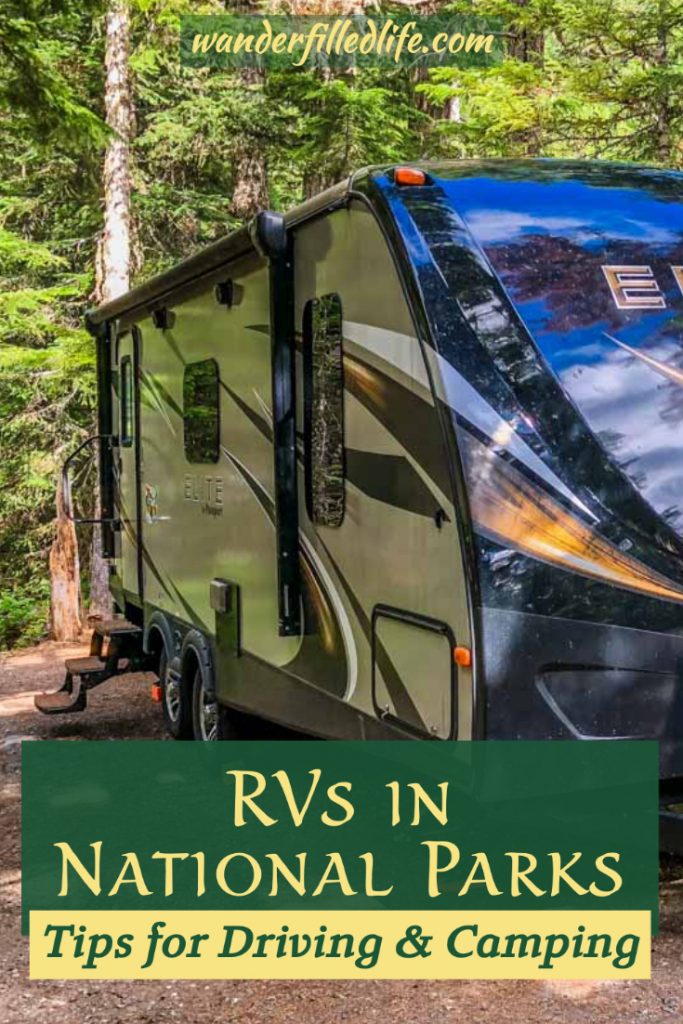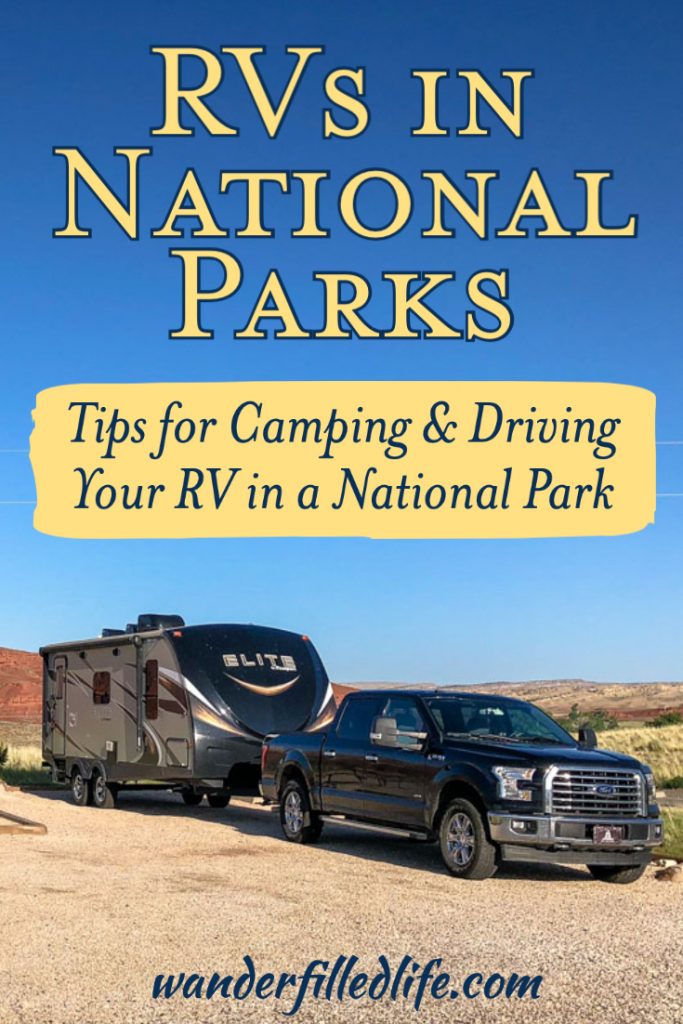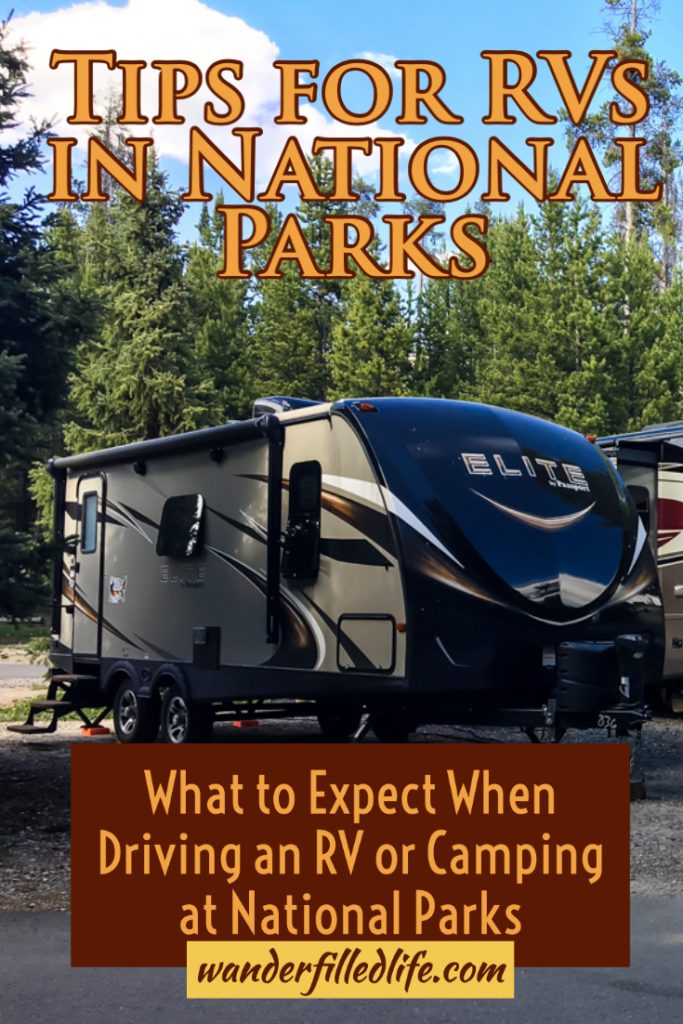Last Updated on February 19, 2024 by Grant
Seeing the country in an RV is one of the coolest experiences you can do and one of the main reasons why folks get an RV is to see the national parks. Since many of the parks are remote and there aren’t a lot of hotels nearby, RV camping makes a lot of sense. Still, driving or camping in an RV in national parks requires a bit of planning.
National Parks campgrounds are primarily designed for tent camping. That’s not to say you can’t bring an RV with you. You just need to be aware the parks were not designed to handle RVs. If you plan to take an RV to a National Park, you should do your homework before heading in.
(Disclaimer: When we link to places where you can buy our stuff or places we stayed, we are using special codes that earn us commissions on the sales at no additional cost to you. Please see our Review Policy for more information.)
Why Camp in an RV in a National Park?
The advantages of staying in a national park can’t be beat, especially in large parks like Yellowstone National Park. By staying in the park, you are closer to everything, which makes going out for an evening of wildlife spotting that much easier.
Typically, there are three options for staying inside a national park: staying in the lodge, staying in a campground in a tent or staying in an RV.
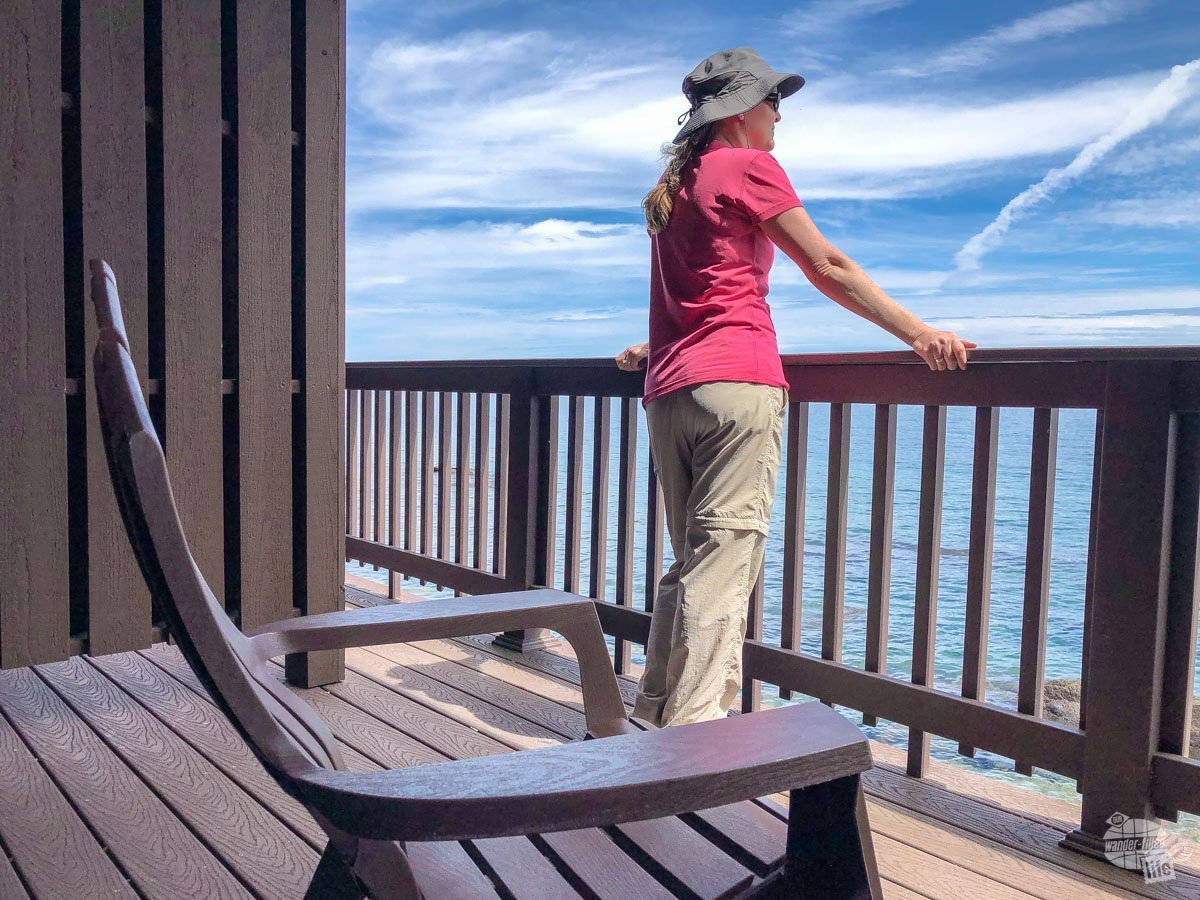
While we have very much enjoyed staying in few park service lodges we have visited, they can be quite pricey. And, you typically don’t get much, if any, luxury for that price.
We have tent camped in many national parks. While we enjoyed tent camping for years, as we got older, getting up off the ground, even off a good air mattress, got old. Additionally, in the summer, staying in a tent can be quite hot if there is no shade.
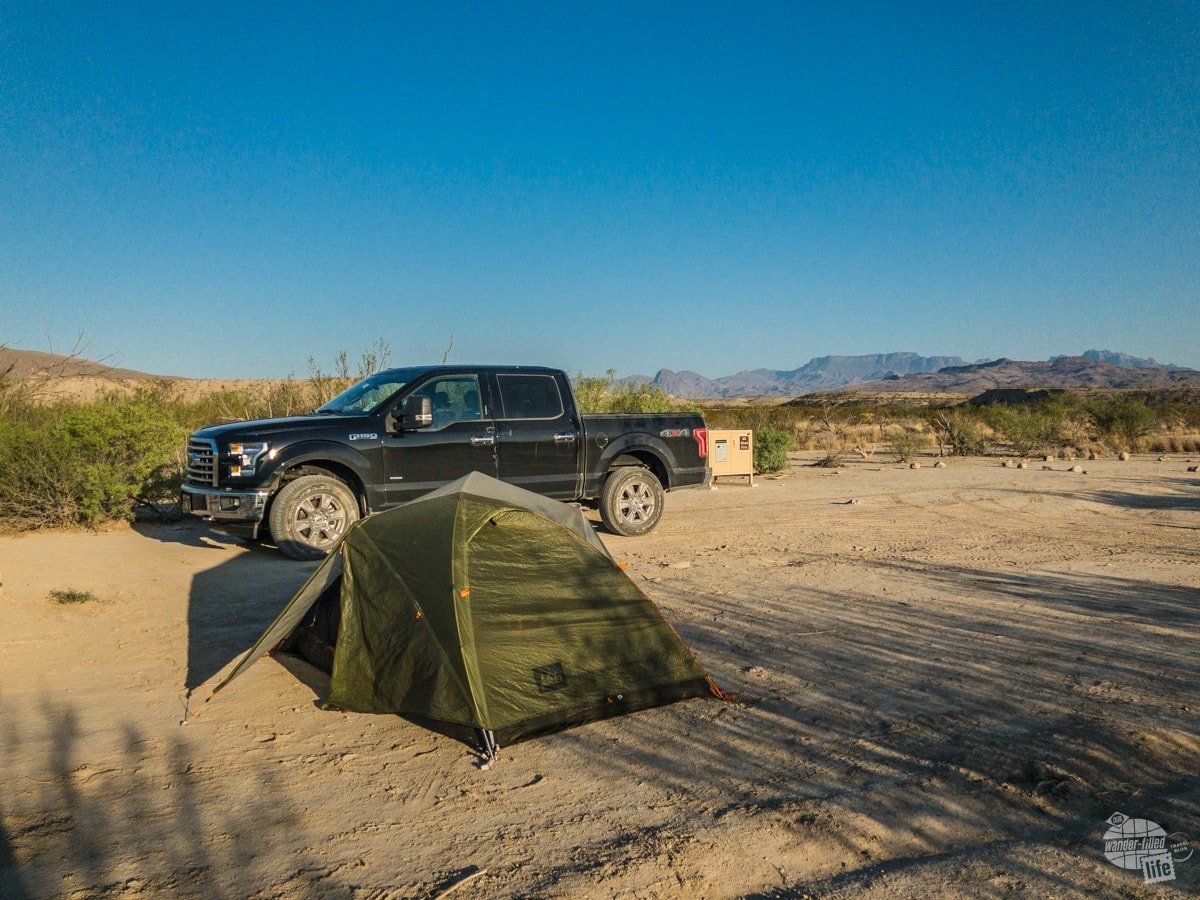
RV camping, on the other hand, allows you to take the comforts of home, like your own bed, with you in a relatively compact package. Depending on your camper, you can keep your food cold, take a hot shower and sit in the shade of your awning in the heat of the day.
In short, having an RV in a national park makes for a great basecamp. That said, not every park is ready for your RV!
Know Your RV’s Dimensions
Before you even consider taking your RV in a national park, you need to make sure you know your camper’s dimensions.
First, know your camper’s length and width, including with the slide out. Since most National Park Service campgrounds are designed for tents, you will find fitting larger RVs difficult. Indeed, the average length of an NPS camp site is 27 feet. That’s total length, including the hitch on travel trailers.
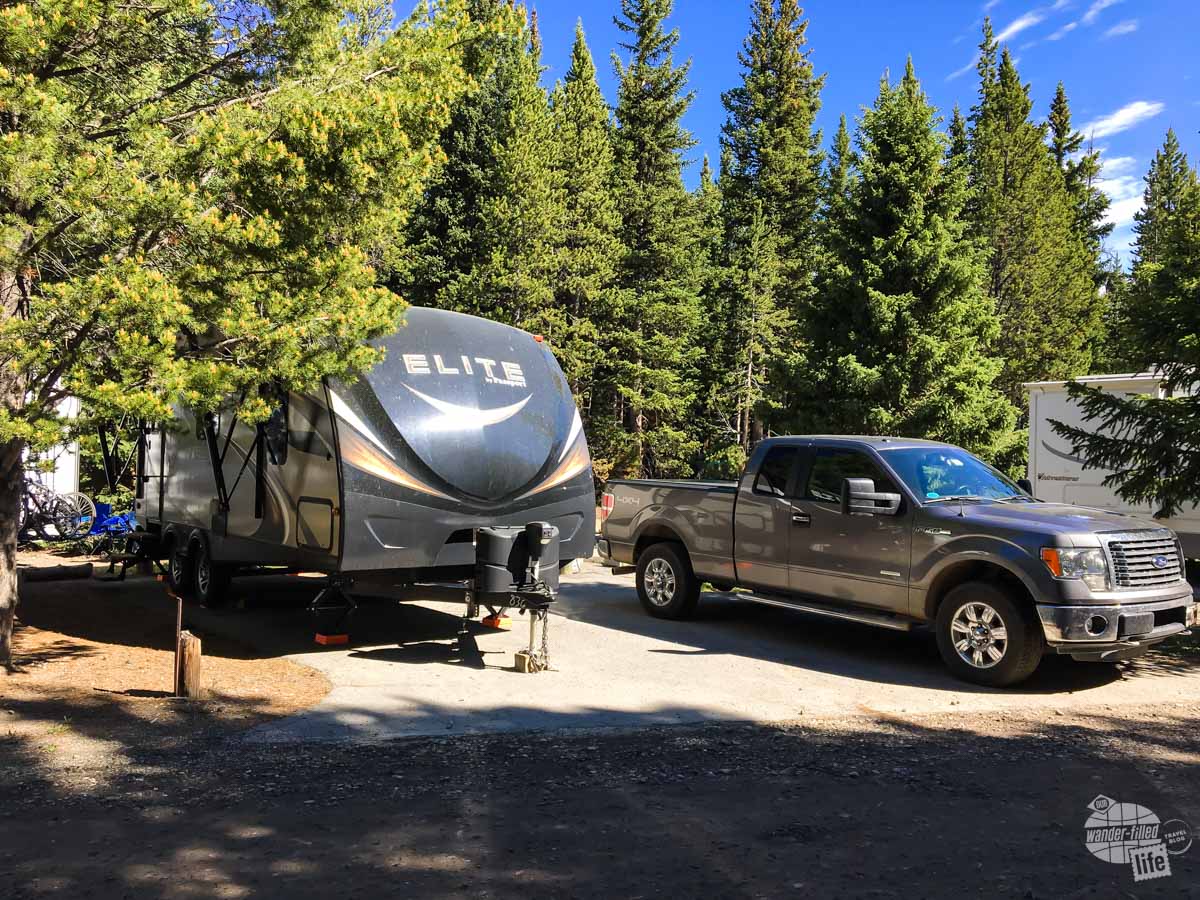
We knew that the campsites at Fishing Bridge, the RV campground in Yellowstone NP, were narrow and we would likely not be able to use our awning. That’s ok because staying in Yellowstone NP was more than worth it!
Don’t forget about your height and total vehicle length, either. Again, the roads in and around most national parks were not designed with RVs in mind. Indeed, the road into Yosemite National Park from the west (El Portal) has a total clearance of 12 feet, 10 inches. The Chisos Basin Campground in Big Bend National Park does not allow trailers longer than 20 feet because the road getting up there is so narrow and winding.
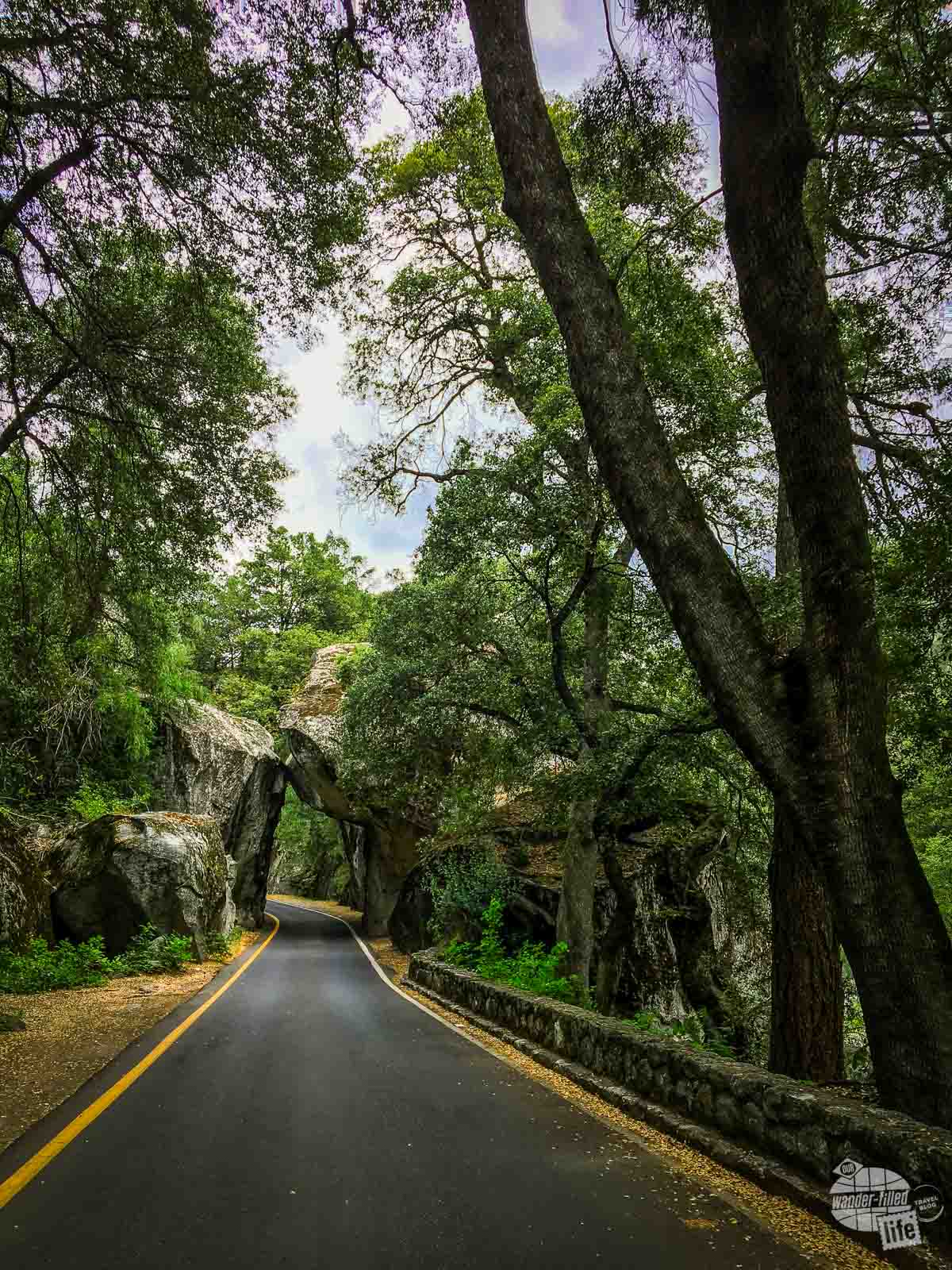
Make Reservations for Your RV in National Parks
National Parks are popular, particularly in the summer. The big name parks, like Yellowstone and Yosemite, book up months in advance. While some parks offer first come, first serve campgrounds, those typically fill up early in the day.
Also, for parks near major metro areas, like Rocky Mountain National Park in Colorado or Mt. Rainier National Park in Washington, be wary of weekends in terms of finding open campsites. Many people head off for a weekend getaway to their local national parks. Who can blame them? But that makes for crowded facilities in the park.
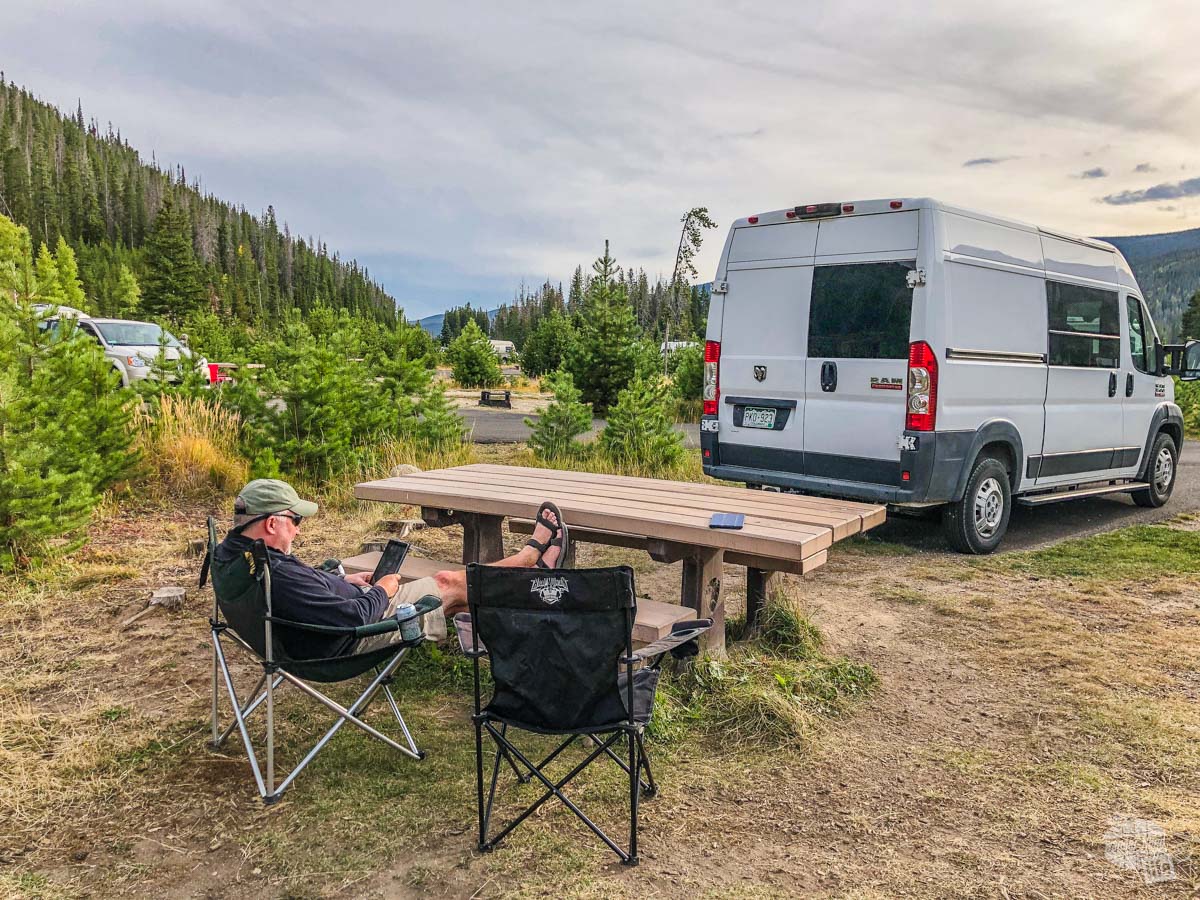
Our recommendation if you are looking to score a walk-in campsite: stay nearby and be in the park early. You can check with the rangers for the average time when the campgrounds are filling up. You can also try calling for a reservable campsite. They often have cancellations and you can pick up one of those sites over the phone.
Driving an RV in National Parks
One thing I highly recommend in terms of taking an RV into a national park is either take a smaller vehicle to drive around in or take a smaller RV/camper van. Taking a long RV as your only source of transportation in a large national park will become cumbersome fast.
Quite simply, national parks are popular destinations and you will find limited parking for cars, much less larger RVs. That means instead of being able to get out and enjoy that beautiful overlook, you will be hunting for a parking space large enough for your camper or just passing it by altogether. Sometimes, you will find spots designated for RVs and buses. Sometimes not.
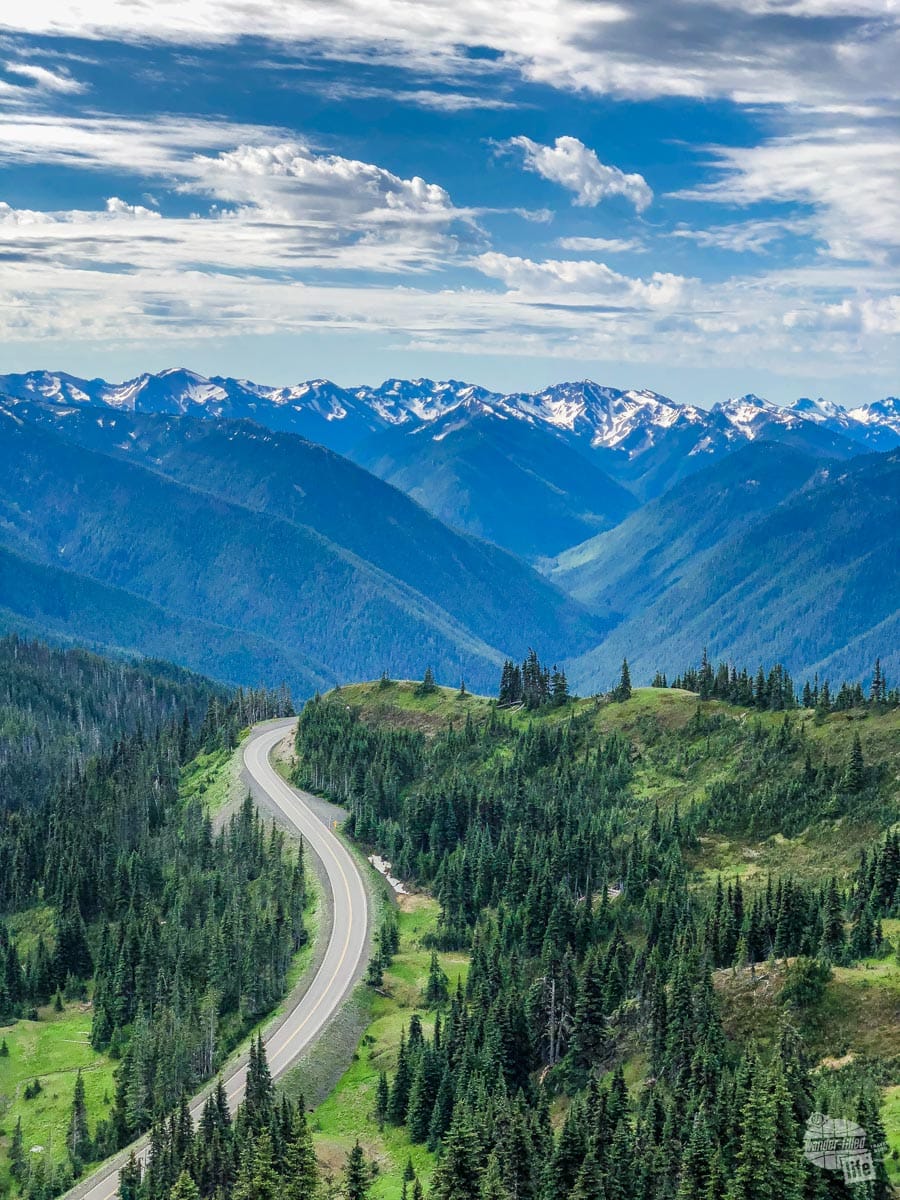
You will also find some roads you simply cannot drive because of tight tunnels or narrow, windy roads.
This past fall, we rented a camper van from Outdoorsy for a visit to Rocky Mountain National Park. We found the size of that van just about perfect for the two of us. While the van was a little tight in some parking spaces, we were able to get around just fine.
Read more about our Outdoorsy RV rental experience here.
For most of our road trips now, we are towing our travel trailer. After setting up at a campground, we are able to get around just fine in our truck. Indeed, having a four-wheel drive is great for national parks with unimproved roads, like Big Bend NP, Glacier National Park or Dinosaur National Monument. While not essential to visit a park, having that in either your towed vehicle or in the truck you tow with is quite nice.
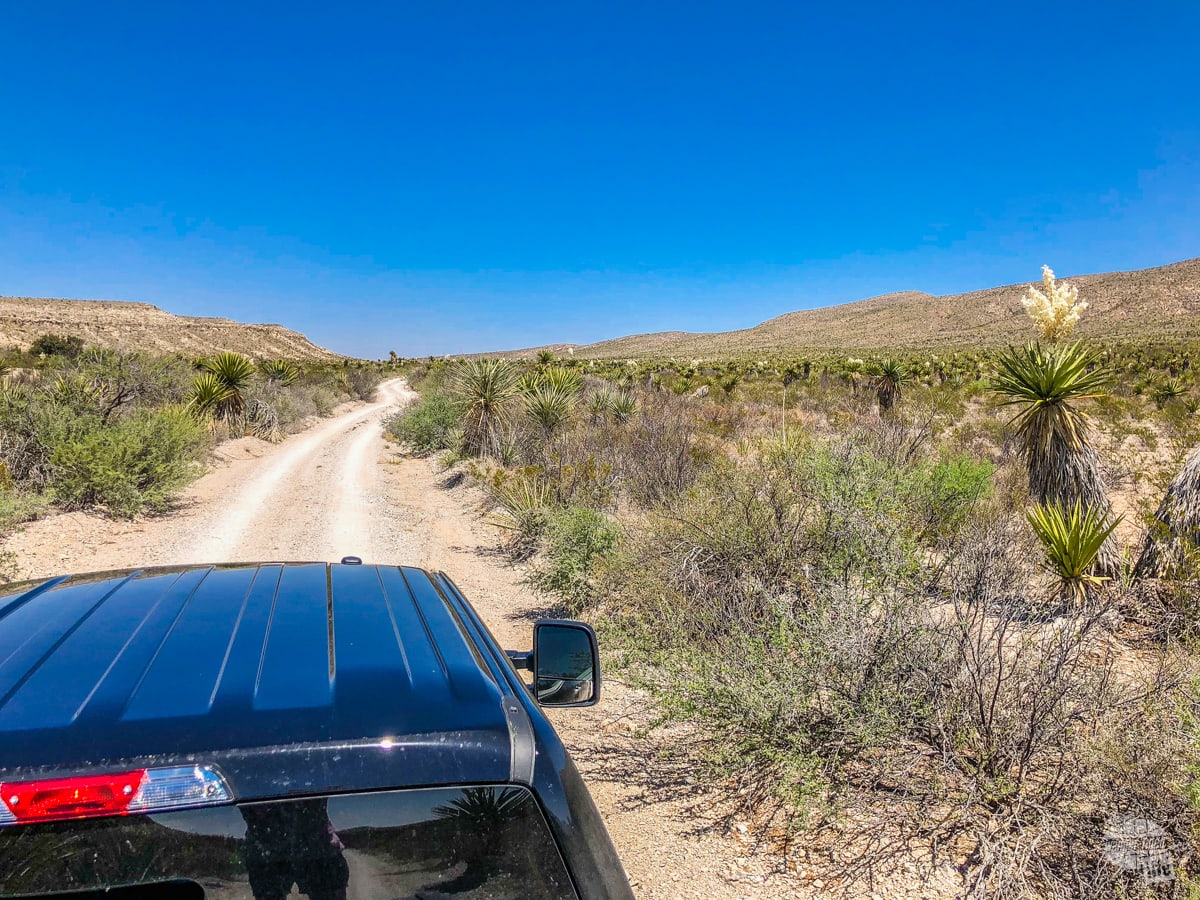
Expect to Camp Without Connections
You most likely won’t have electricity, water or sewer at your campsite. Out of all of the campgrounds we have stayed at in various national parks, only one (Fishing Bridge in Yellowstone NP) had full hookups. That said, there is a full hookup campground in Big Bend National Park but it is basically a parking lot with hookups.
We have camped at a couple of excellent campgrounds with partial hookups (water and electric), namely the excellent Horseshoe Bend Campground in Bighorn Canyon National Recreation Area and the outstanding Bandy Creek Campground in Big South Fork National River and Recreation Area. Both campgrounds did have dump stations, so you didn’t have to haul full wastewater tanks very far.
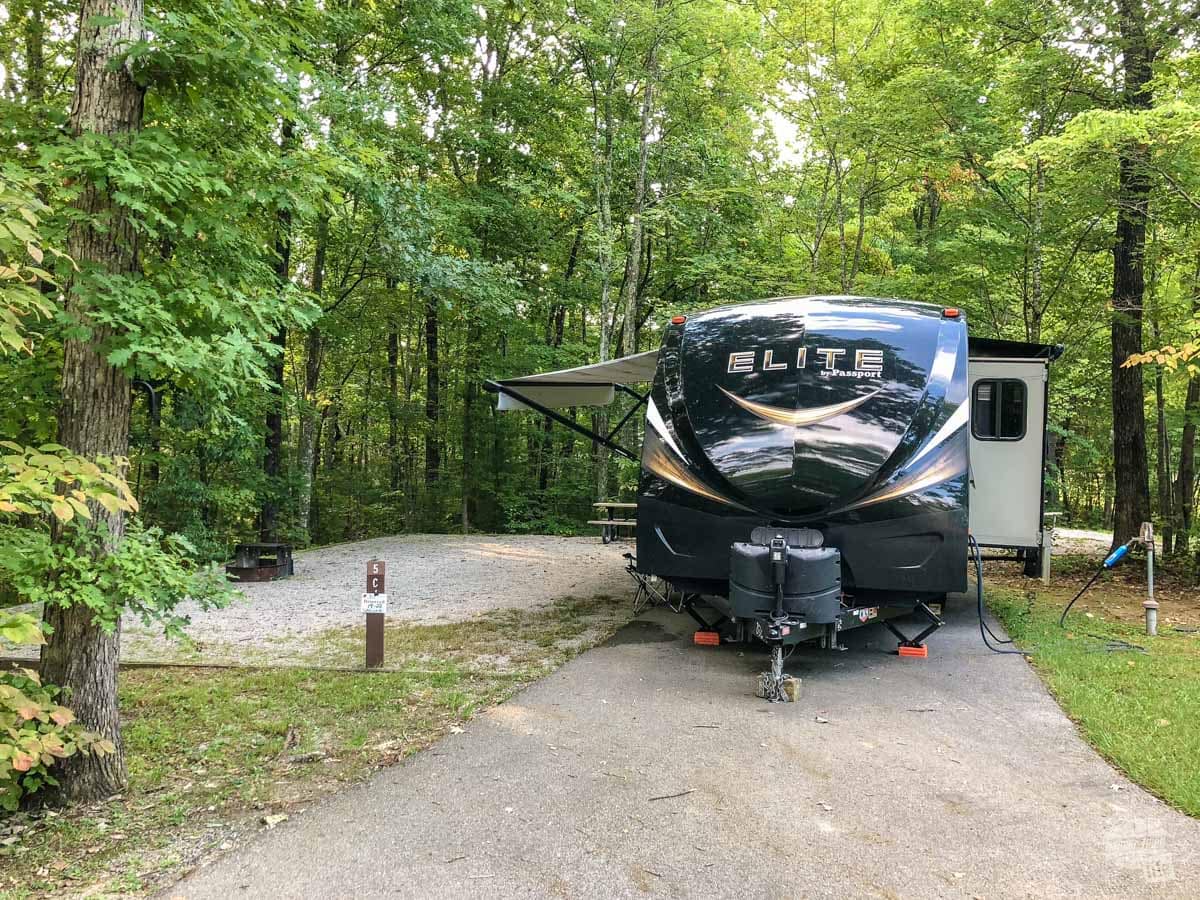
That said, we find partial connections in national parks to be the exception rather than the rule.
When we visited Mt. Rainier NP back in 2018, we primitive camped at Cougar Rock Campground for three days. We were impressed with how well our camper handled being without hookups. We were able to run the furnace before bed and first thing in the morning to take the edge off the cold. The dual-mode fridge ran off propane quite well. We did not need to recharge the battery for a three-day stay.
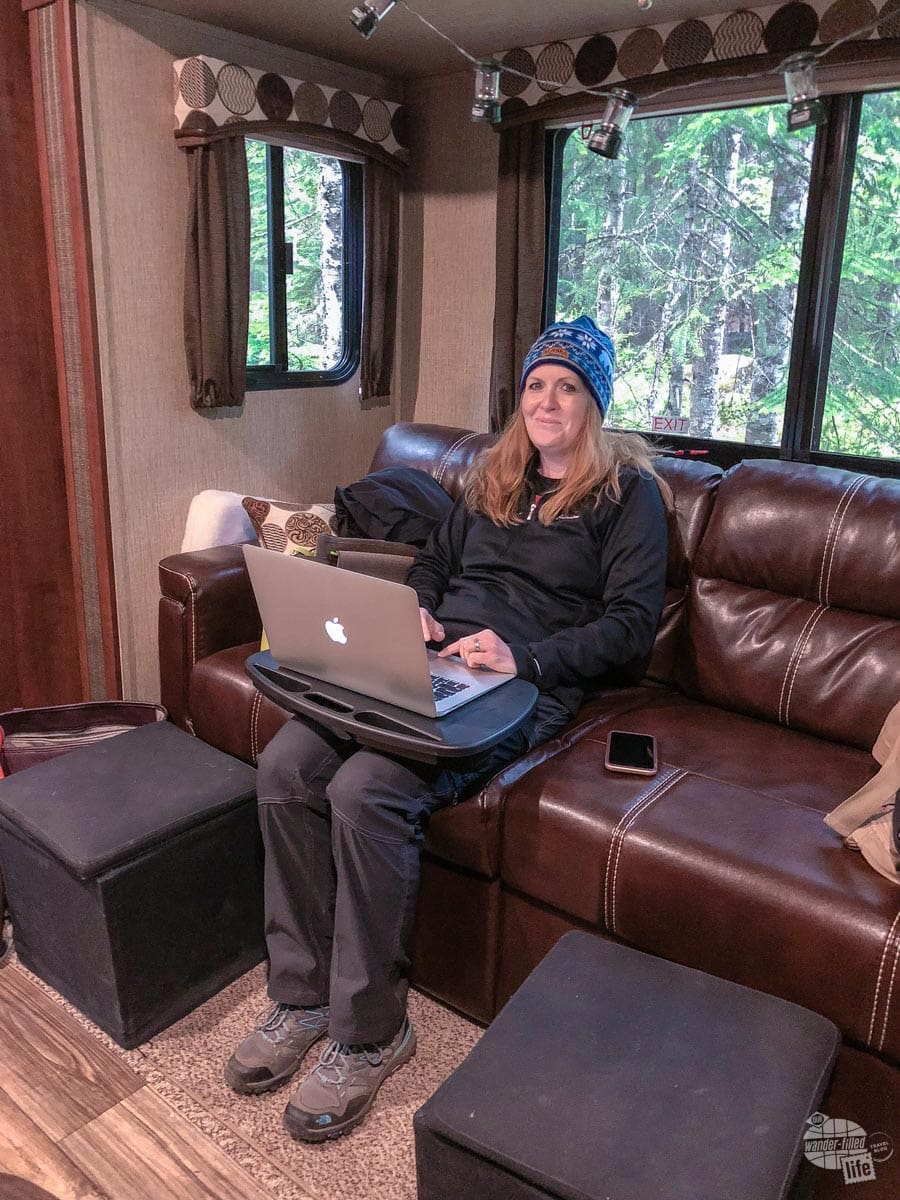
That impressed us.
Going forward, we are already thinking about adding both solar panels and a generator to our next camper. We would like to boondock even longer. We know plenty of RVers who have already gone down that road.
Just be prepared if you do have a generator to have limited hours you can recharge your batteries for your RV in National Parks campgrounds. This is so tent campers are not listening to your generator all night long.
Honestly, one of the biggest limiters for primitive camping for us is being able to run air conditioning in the summer. Our other limiter is our wastewater tanks, in particular the gray water tank. Our capacity limits us to about three showers each before we have to dump the gray water tank. We have an outdoor shower and we might start using that if we were boondocking on remote BLM land. We wouldn’t use it in a campground in a national park.
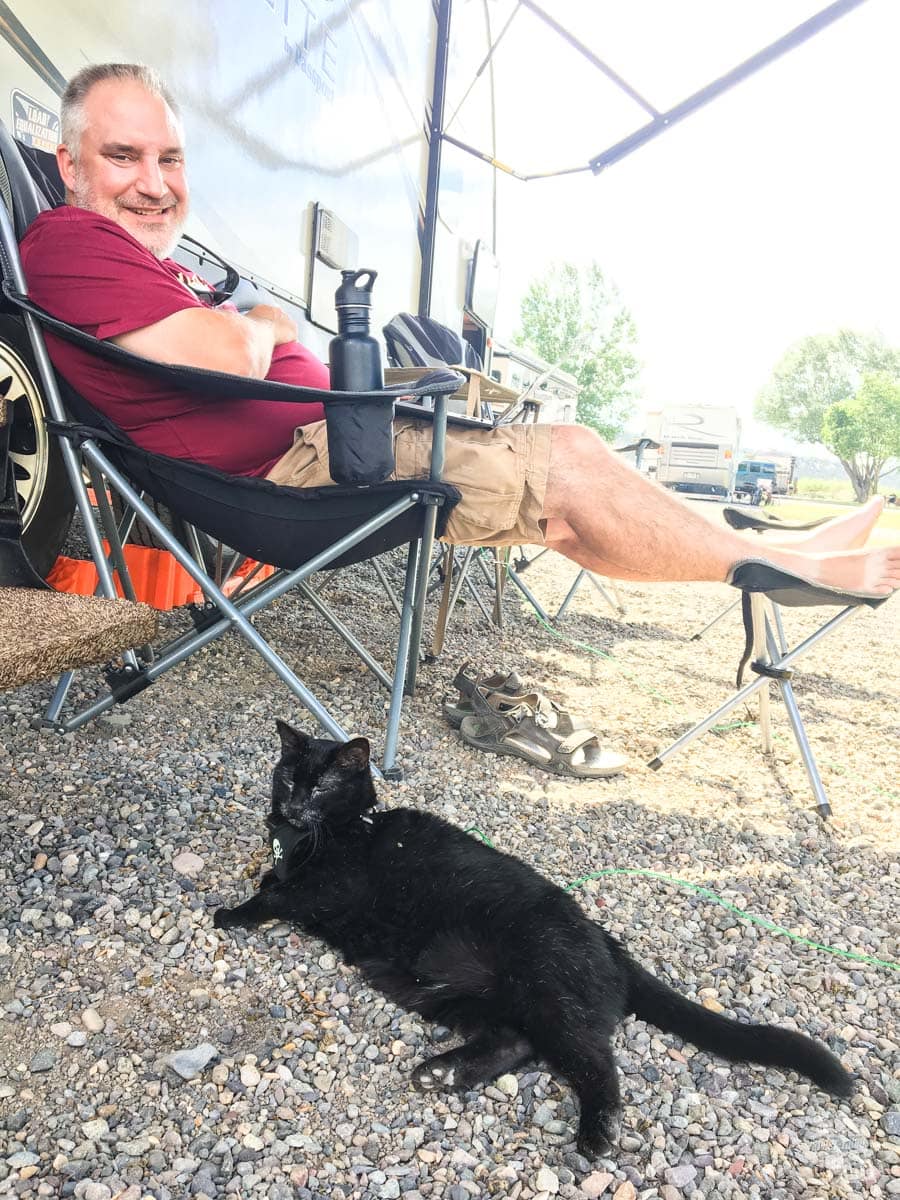
Because of those limitations, we chose not to camp in Yosemite NP when we visited in 2017. We did not want to spend seven days without connections because we had Alee, our camping kitty, with us. Leaving her in a camper without air conditioning all day was not an option. We know most days in Yosemite Valley don’t get that warm but we didn’t want to take any chances.
Be a Good Neighbor
One thing I notice about RV campers is they get used to camping with only RVs and they are less careful about noise. Aside from running generators outside of the hours posted, be sure you are making a point to limit your noise when sharing a campground with tent campers.
The music you are playing with your friends at 9 p.m. sounds awesome to you. I get it. Just remember your neighbors don’t have a hard-sided room to retreat into. If the sun has gone down, your noise should be turned down as well.
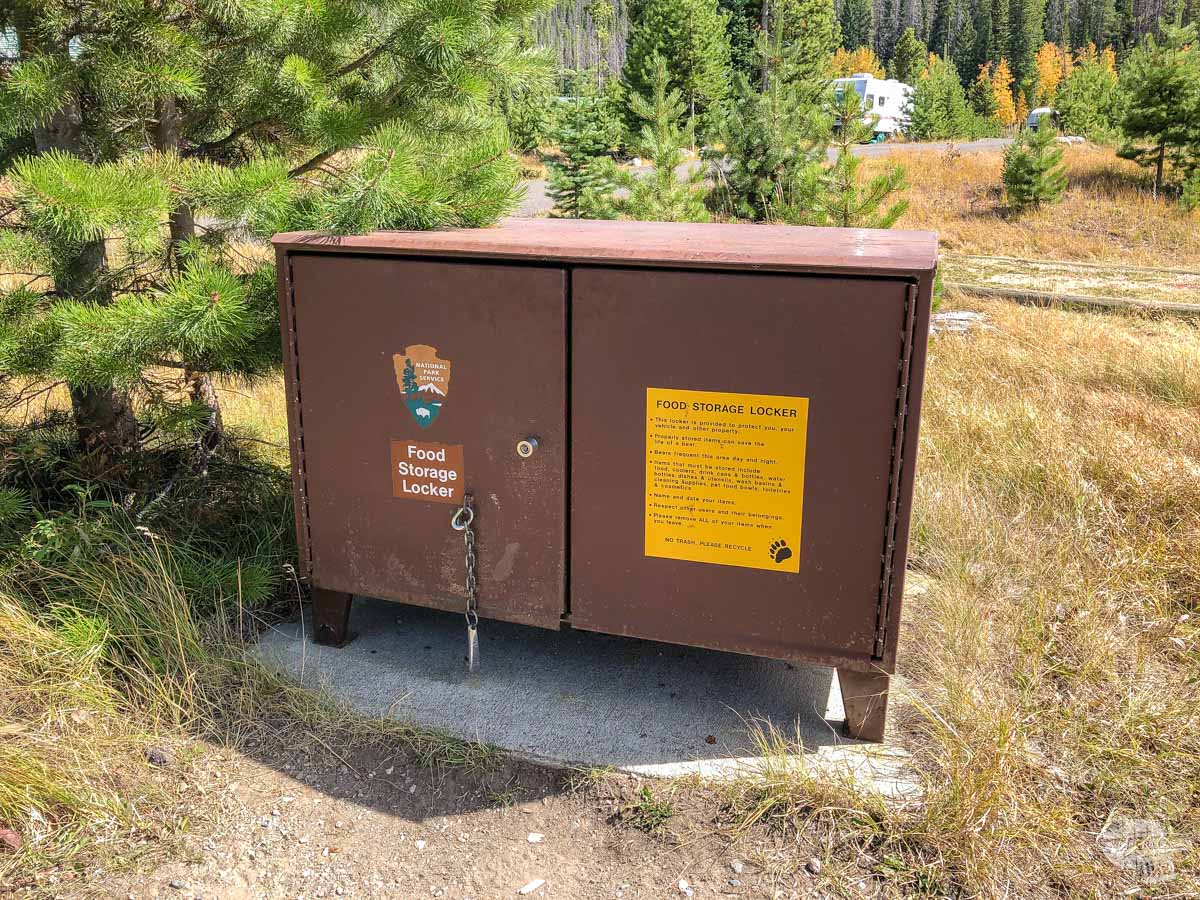
The other part about being a good neighbor is not being a problem for wildlife. Remember, it is your responsibility to make sure your campsite is clean and you follow all food storage requirements.
Even in a hard-sided camper, you still need to follow all bear food storage requirements. It may seem onerous but it can save both your camper a lot of damage and possibly a bear’s life.
Always make a point to check in with the campground host. Getting details on food storage requirements in any NPS campground, not just one the ones in bear country, is essential. You might be surprised to find other animals you don’t want to hang around, like javelinas in Big Bend NP, are just as interested in your food.
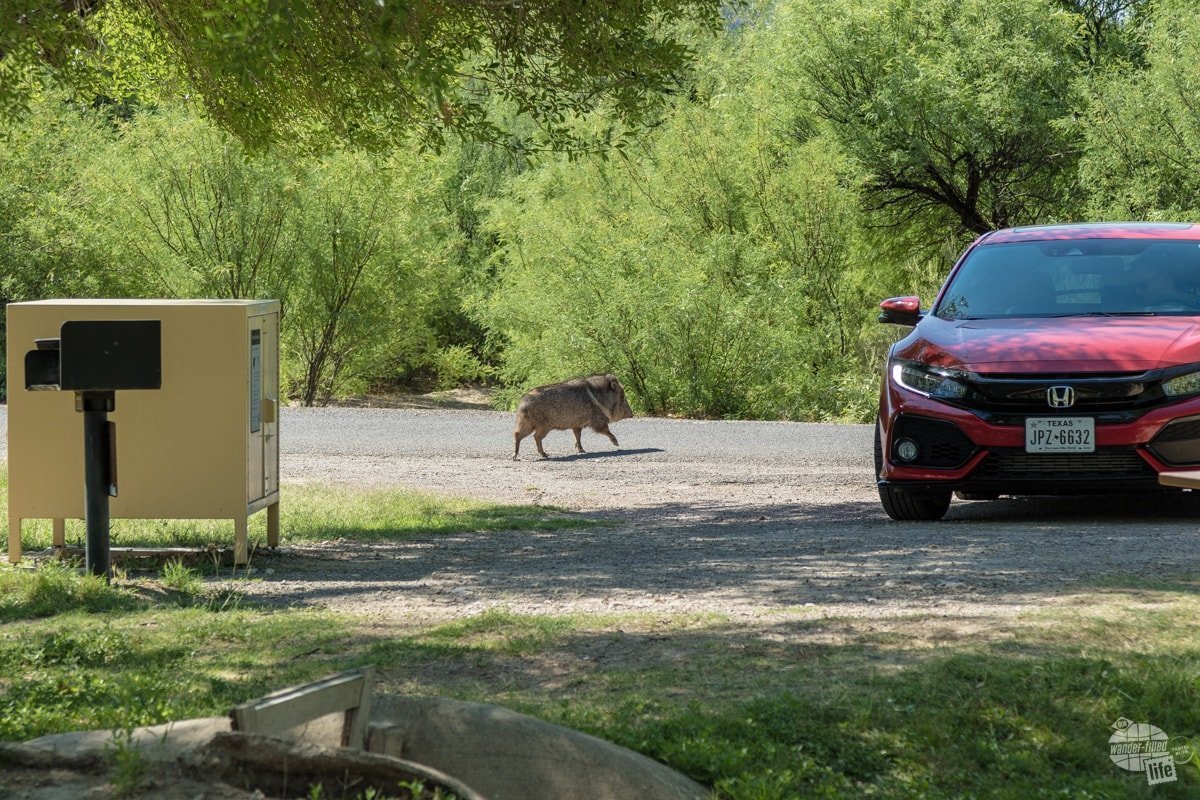
Final Thoughts on RVs in National Parks
Camping in national parks is one of our absolute favorite things to do. It really allows you to disconnect from the rest of the world and just be in the grandeur of some of the prettiest places on earth.
RV camping in national parks only makes the experience that much more comfortable and affordable, especially if you are staying more than a couple of days. We have more than enjoyed taking our RV in national parks over the past four years.
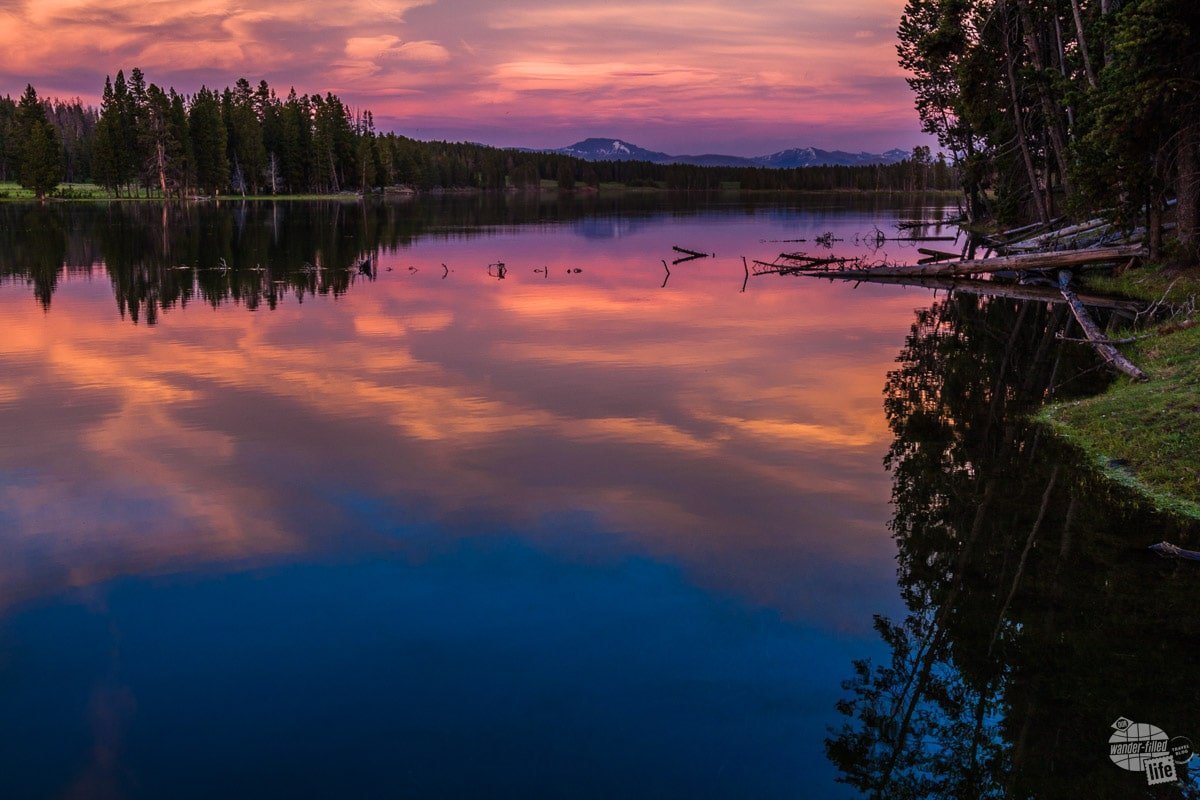
That said, you have to understand you will not find the same amenities for RVs in national parks as you will at private campgrounds. If you go in knowing what to expect and plan ahead, it will make your stay that much more enjoyable.
National Parks are America’s treasures. Being able to stay inside one these amazing places, even for a short period of time, is more than worth the minor difficulties compared to staying outside the park.
Travel Resources
What do you use to find a flight?
We use Skyscanner to find deals on flights. Skyscanner has a great interface and compares tons of airlines for the best pricing and routing. That said, it does not always have every airline and some airlines will have better deals on their website. Still, Skyscanner is a great place to start.
Click here to search for a flight.
What do you use to find a hotel?
We typically stay at Hilton properties, so we use the Hilton website. You can find good Hilton Honors discounts or AAA discounts for a hotel there. We make great use of our free night certificates from our Hilton Honors American Express.
Click here to book a Hilton property.
If there are no Hilton properties available, we use TripAdvisor to read reviews and book the hotel. We find we can get the best price that way.
Click here to search for a hotel.
We recently partnered with Stay22 to add interactive maps to each of our destination posts. This will allow you to see a plethora of hotels and vacation rentals all in one responsive map of the area.
What if I need more space than I can get at a hotel?
We use Vrbo for the times when we have rented a cabin for a weekend getaway, like this cabin in Townsend, TN, or needed to rent a house for a large family vacation. We had a great experience with them in terms of refunding deposits when COVID hit and will continue to use them.
Click here to search for a vacation rental.
Who do you use for rental cars?
As a general rule, we book with Hertz for rental cars. We have had nothing but good experiences with them. Plus, we really like unlimited mileage and not worrying about crossing state lines. We have even rented from Hertz overseas in both Slovenia and Croatia.
Click here to book a rental car.
How about booking a cruise?
We have found some amazing prices for booking a cruise through Cruise Direct. We have saved a lot of money on our cruises compared to what we found elsewhere, making a last-minute Bahamas cruise even cheaper.
Click here to book a cruise.
What if I want to rent an RV?
We highly recommend Outdoorsy for RV rentals. We rented a camper van for a week to visit Rocky Mountain National Park for the elk rut and Custer State Park for the Buffalo Round-Up and had a blast. The program was easy to use and we really enjoyed the freedom of having a camper van for that trip.
Click here to rent an RV.
What do you use for booking tours?
We don’t often book tours. Typically, we like to do stuff on our own. That said, there are some experiences you can’t have any other way. So, when we do want to book a tour, we always check Viator first.
Click here to book a tour.
Do you use anything to get discounts on the road?
We make extensive use of both Good Sam and AAA on the road. Good Sam is normally regarded as a discount card for RVers at campgrounds and Camping World but anyone can use the 5 cents off a gallon at the pump at both Pilot and Flying J.
Click here to get a Good Sam membership.
We have had AAA as long as we have been married and it has more than paid for itself in discounts at hotels, aside from the peace of mind of having roadside assistance. Add in paper maps and the ability to get an international driver’s license and it is more than worth it for any traveler out there.
Click here to get a AAA membership.
